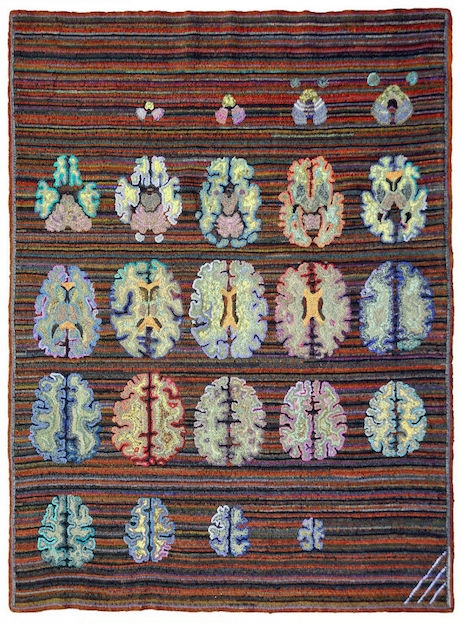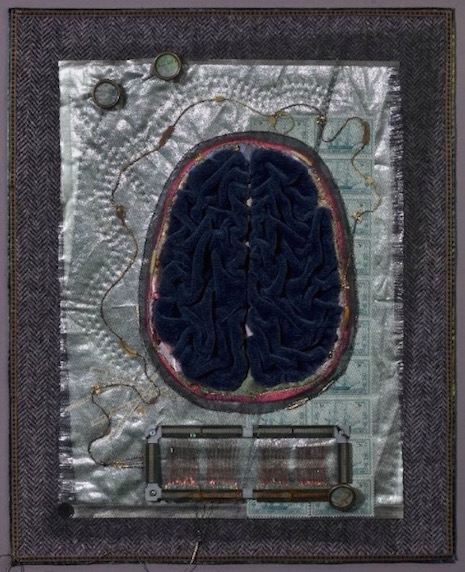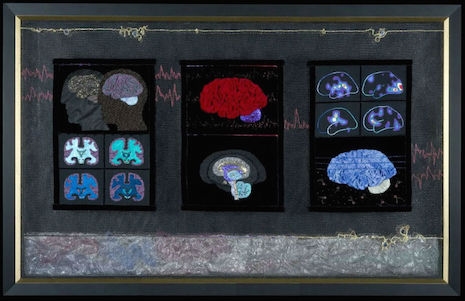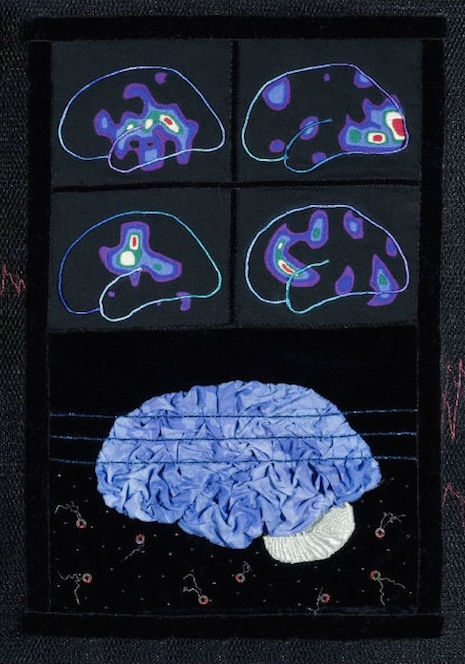
Marjorie Taylor, “Mark’s Brain,” 2002
When you first hear about the Museum of Scientifically Accurate Fabric Brain Art, one immediately wonders whether its purpose is in any way therapeutic or perhaps that actually plays some kind of odd and unexpected research role. But no, the point appears to be far more mundane: some embroidery enthusiasts just find brain scans and fMRI images visually appealing and enjoy reproducing the vibrant and oftentimes striated outputs of the complex medical devices in the form of embroidered quilts.
“I couldn’t help but look at them with the eye of a quilter,” says Taylor, a psychologist at the University of Oregon and a key contributor to the museum’s holdings. “I thought the folds of the cerebral cortex would be great in velvet.” Taylor’s first piece was a quilt with a cerebral cortex in blue velvet on a silver background; it took her several years to complete four brain-scan quilts. “Not very many,” she admits. “They take a long time to do.”
Curator Bill Harbaugh, whose day job is economics professor at the University of Oregon, welcomes visitors to the site with the following message:
This is the world’s largest collection of anatomically correct fabric brain art. Inspired by research from neuroscience, dissection and neuroeconomics, our current exhibition features a rug based on fMRI imaging, a knitted brain from dissection, and three quilts with functional images from PET. The artists are Marjorie Taylor and Karen Norberg. Techniques used include traditional Nova Scotian rug hooking, quilting, applique, embroidery, beadwork, knitting, and crocheting. Materials include fabric, yarn, metallic threads, electronic components such as magnetic core memory, and wire, zippers, and beads.
While our artists make every effort to insure accuracy, we cannot accept responsibility for the consequences of using fabric brain art as a guide for functional magnetic resonance imaging, trans-cranial magnetic stimulation, neurosurgery, or single-neuron recording.

Marjorie Taylor, “Warm Glow, or fabricMRI: Bill’s Brain,” 2009

Karen Norberg, “The Knitted Brain”

Marjorie Taylor, “Velvet Cortex,” 2006

Marjorie Taylor, “Art and Science #1,” 2000

Marjorie Taylor, “Art and Science #1,” 2000 (detail)